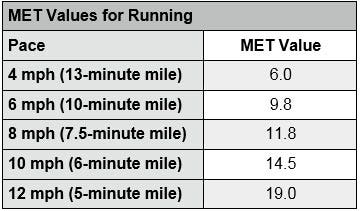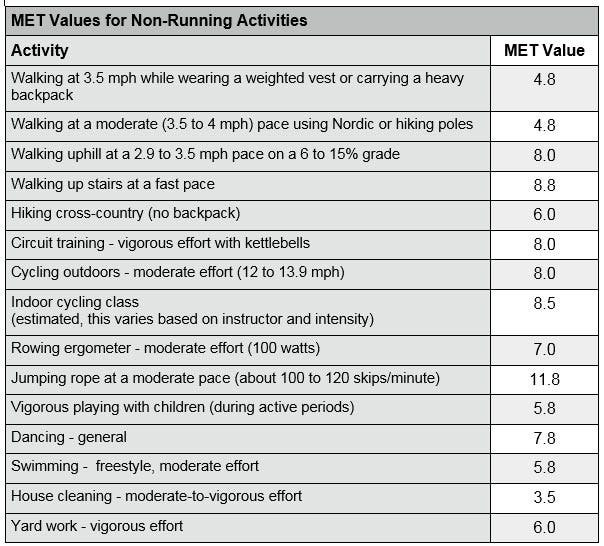Do You Really NEED to Run to Get in Shape?

Six alternatives if you hate running.
Running. For some people, the word conjures up visions of an open path and the opportunity to challenge your physical limits. For others, just the thought of running can create cringeworthy images of being forced to run laps during elementary school physical education classes. When most people think of starting a workout program, running is often one of the first forms of exercise that comes to mind because it’s affordable and easily accessible; all you need is a pair of proper running shoes and a nearby path or trail. Running can be an extremely effective mode of exercise to help you burn calories and improve the ability to deliver oxygen to your working muscles, technically called aerobic efficiency. But what if you’re one of those people who just don’t like to run, do you absolutely have to do it?
Running increases the oxygen demand from the larger muscles in the lower body, making it effective for burning calories. However, running involves moving over the ground at a relatively fast pace. The faster you move, the more force is transmitted into your body when your foot hits the ground, which can cause discomfort or pain. When running at a moderate-to-fast pace, you can experience up to four or five times your body weight being sent into each leg every time it makes contact with the ground, which can significantly increase the risk of injury for people with poor posture or running mechanics. Even though they find it uncomfortable or downright painful, many people run because they think they have to and mistakenly believe that the discomfort they experience is a required part of reaching their fitness goals.
If this is you, there is good news: IF YOU DON’T LIKE TO RUN, YOU DON’T HAVE TO!
Calculate the best exercise for your needs
Here’s some geeky information that can help you determine the best form of exercise for your personal needs: The body burns approximately 5 calories of energy to consume 1 liter of oxygen. The more oxygen your body uses during physical activity, the more calories you will burn. Metabolic equivalents, or METs, are used to estimate the energy expenditure for many common physical activities. One MET is approximately 3.5 milliliters of oxygen consumed per kilogram of body weight (ml/kg) and represents the amount of oxygen used by the body while at rest (such as what you’re doing right now while reading this blog post). An activity that is four METs requires the body to use approximately four times as much oxygen than when at rest, making that activity more efficient at expending energy and burning calories. If you run for the purpose of burning calories but dislike it or find it uncomfortable, then consider finding other types of physical activity that you can actually enjoy while increasing oxygen consumption and caloric expenditure.

The Compendium on Physical Activity identifies MET values for a wide variety of physical activities. Researchers have assigned MET values for everything from many common types of exercise to relatively obscure activities like pulling a rickshaw. Walking at a moderate pace of 2.8 to 3.2 miles per hour on a level, firm surface is approximately 3.5 METs, meaning that the body is using 3.5 times the amount of oxygen than when sitting still at rest. Running at 7 mph, which allows you to cover 1 mile in approximately 8.5 minutes, has a MET value of 11.0, meaning that your body uses approximately 3 times the amount of oxygen than when walking and 11 times more oxygen than sitting at rest. This brief review of energy expenditure can help you see why running is considered effective for burning calories, but if you don’t want to run, you don’t have to. Simply identify other activities that you enjoy that help you consume more oxygen, which in turn burns more calories. By the way, pulling a rickshaw is 6.3 METs.
If you like working out and being physically active but don’t really care for running, then you’ll be happy to find that you’re not alone. Yes, running provides a number of important health benefits, but the good news is that it is not the only way to improve aerobic efficiency or burn calories. Here are six activities other than running that can help you burn calories or get the same aerobic benefits without the wear and tear on your body. To give you an idea of the energy cost of running, here are the MET values for various running speeds:
Six alternatives to running
If you are looking for some new ideas for your cardio workouts, here are six exercise options that you can start doing right away to burn calories without having to run:
1. Walking may not expend as much energy as running, but when using Nordic walking poles, carrying a backpack (or wearing a weighted vest), cross-country hiking, or ascending a hill or set of stairs, the energy expenditure can get close to that of running but with much less impact on the body.
2. Clean your house or yard. No, it’s not really that much fun, but you can use more oxygen and burn more calories than simply walking—and you end up creating a more beautiful space to enjoy. If you live in a place that doesn’t have a yard to clean, you can look for volunteer opportunities in your area, which would be a great way to help others while burning calories.
3. If you have a health club membership, consider using the rowing ergometer or taking an indoor cycling class. Both offer the opportunity to increase your caloric output with minimal impact forces on the body.
4. If you have access to a pool, because it uses a lot of muscles at the same time, swimming can help burn a lot of calories without putting too much stress or physical forces on your joints.
5. Find your inner child by going out and playing with yours. No, sitting on the bench checking your phone does NOT count. It means getting up and actively playing with them at a park or on a favorite climbing toy.
6. If you enjoy dancing, then dance, dance, dance the calories away and enjoy never having to lace up another pair of running shoes again.

If your goal is to start an exercise program to improve your health and lose weight, the body stores excess energy as fat, which is then used to fuel physical activity with oxygen. Any exercise that increases oxygen consumption can help burn calories and excess body fat. Running can be an extremely effective way of burning calories but is certainly not the only way to exercise. The truth is that for many people, running can be uncomfortable at best, cause an injury at worse, and certainly may not be the best form of exercise for their needs. No matter which type of exercise or activity you pursue, keep the following thought in mind when it comes to exercise:
Photo credit: Wavebreakmedia Ltd, ThinkStock